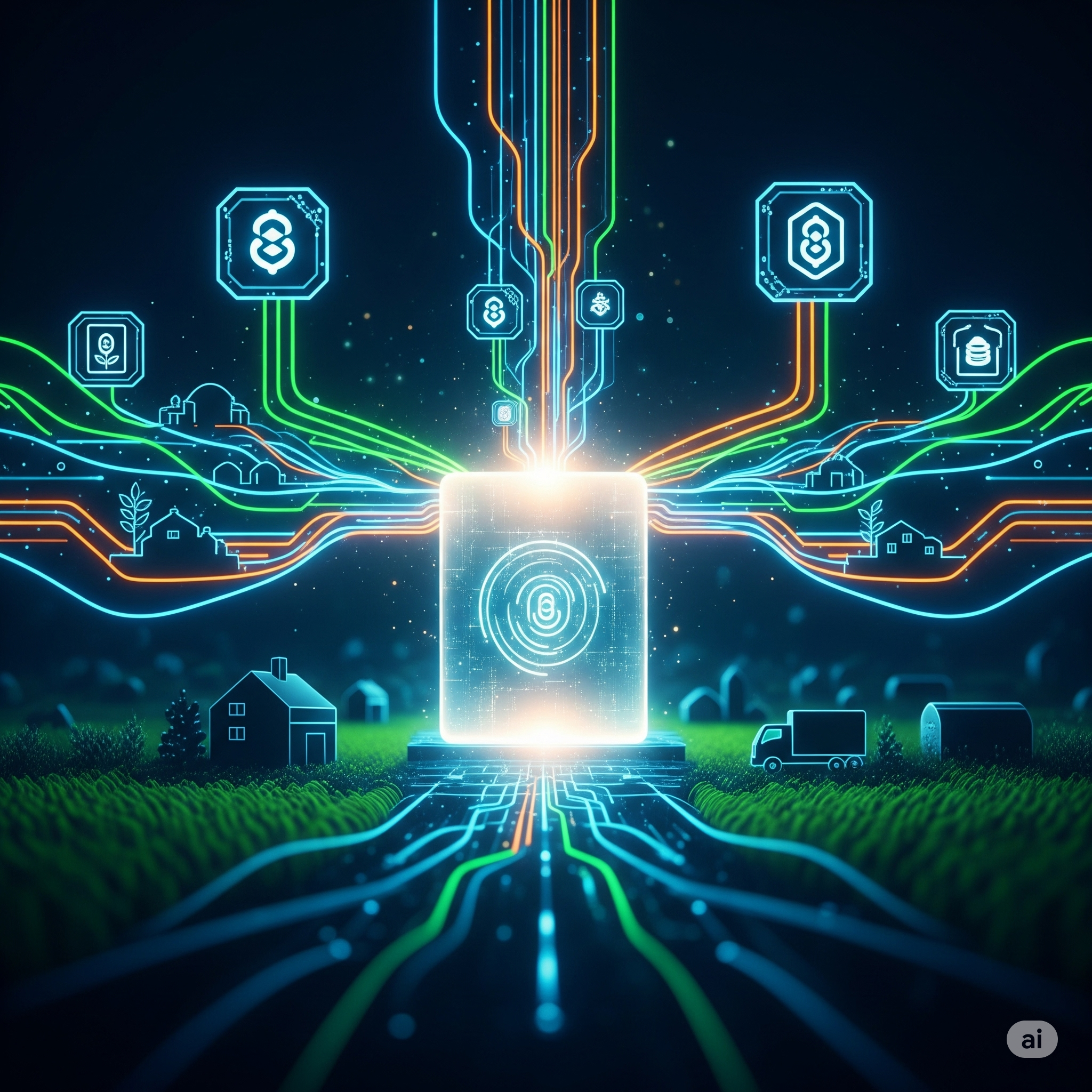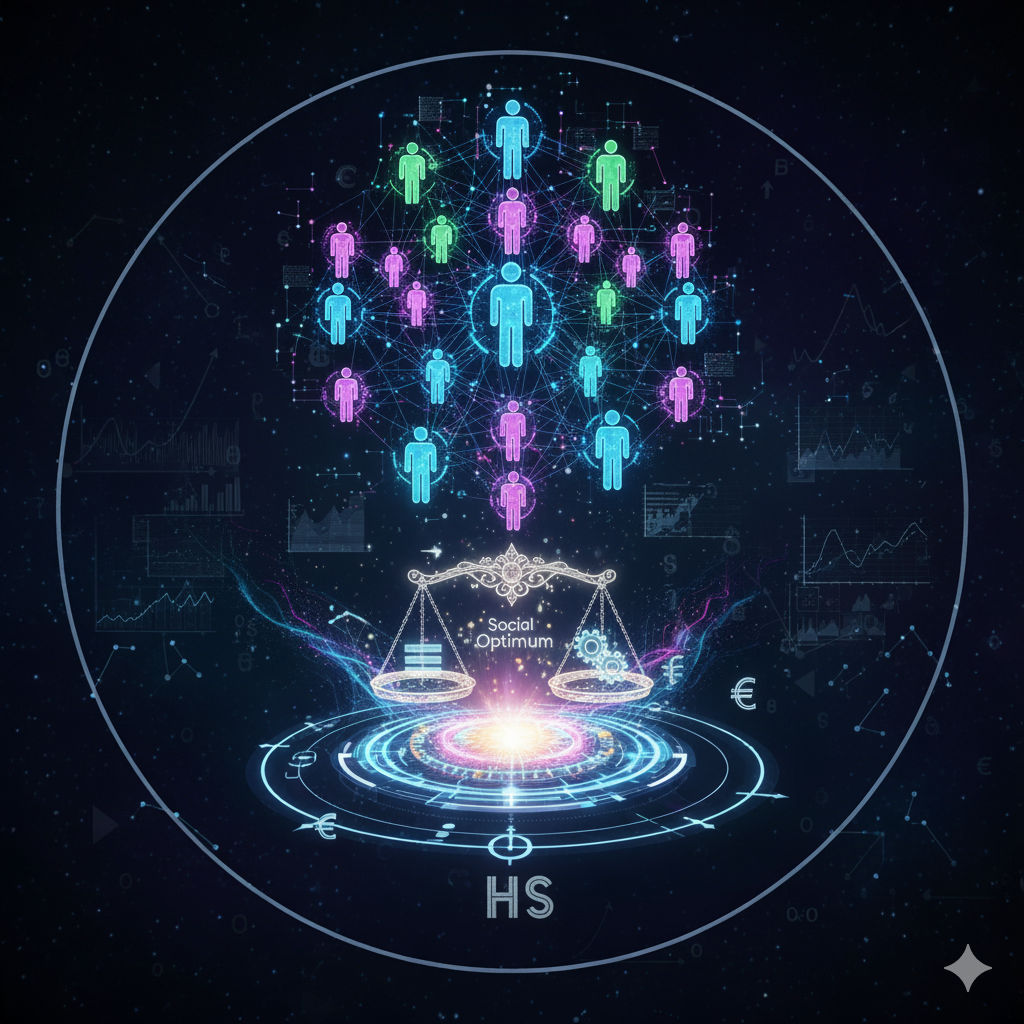🌾 Introduction
Agriculture is not just the backbone of India’s economy—it is also one of the most complex industries with an extensive supply chain that spans from the farmer’s field to the consumer’s plate. This journey includes multiple intermediaries, logistics, storage points, and marketplaces. Unfortunately, this complexity often results in a lack of transparency, inefficiency, wastage, and loss of farmer income.
Enter Blockchain technology, a revolutionary tool that promises to bring clarity, accountability, and efficiency to the agricultural supply chain. Originally designed for secure digital currency transactions, blockchain is now being harnessed to revolutionize how food is produced, processed, transported, and sold.
This article explores the role of blockchain in agriculture, particularly in enhancing supply chain transparency.
🔗 What is Blockchain?
Blockchain is a decentralized digital ledger that records transactions in a secure, transparent, and tamper-proof way. Each record or “block” is linked to the previous one, forming a “chain” of data.
Key features of blockchain:
- Decentralization: No single entity owns the data
- Transparency: Everyone in the network can see the records
- Immutability: Once recorded, data cannot be altered
- Traceability: Every step of a product’s journey is logged and visible
🚜 Why Does Agriculture Need Blockchain?
Agriculture in India faces several challenges that blockchain can help address:
- Middlemen Exploitation: Farmers often do not get fair prices
- Lack of Traceability: Consumers and retailers are unaware of where their food comes from
- Post-Harvest Losses: Inadequate infrastructure and tracking lead to massive wastage
- Food Adulteration: Quality checks are often bypassed
- Subsidy and Insurance Fraud: Beneficiaries are hard to verify
Blockchain can provide a digital solution that records every step in the supply chain, from planting to consumption.
🧩 How Blockchain Works in Agricultural Supply Chains
1. Farm Level Data Collection
- Farmers enter data such as seed source, cultivation practices, and fertilizer use
- IoT devices and sensors may automate some inputs
2. Harvest and Post-Harvest Recording
- Quantity, quality, and date of harvest logged
- Details of storage, transport, and packaging captured in real-time
3. Logistics and Processing
- Each transportation step is registered
- Processing facilities record batch tracking
4. Retail and Consumer Access
- Retailers and consumers scan QR codes to see origin and handling details
- Enables “farm-to-fork” visibility
✅ Benefits of Blockchain in Agriculture
| Benefit | Explanation |
|---|---|
| Supply Chain Transparency | Track produce from farm to consumer in real time |
| Trust and Credibility | Consumers trust verified food origins |
| Better Prices for Farmers | Eliminate middlemen and link directly to buyers |
| Reduced Waste | Monitor and optimize storage and logistics |
| Efficient Subsidy Distribution | Verify farmer identity and avoid fraud |
| Enhanced Food Safety | Identify contaminated batches quickly |
📊 Case Studies & Real-World Applications
1. Agri10x
- Blockchain-based agri-trading platform
- Connects farmers with global buyers
- Smart contracts ensure fair payments
2. Walmart-IBM Food Trust
- Indian farms part of global blockchain tracking system
- Consumers can trace mangoes or spinach from Indian farms
3. NITI Aayog & EkStep Foundation Pilot
- Blockchain used for fertilizer subsidy tracking
- Transparent and real-time monitoring of disbursement
4. AgNext Technologies
- Uses blockchain for food quality testing
- Integrates with AI-based testing tools
🔍 Blockchain vs Traditional Systems
| Aspect | Traditional System | Blockchain-Based System |
| Record Keeping | Manual, paper-based, error-prone | Automated, immutable, and secure |
| Trust Factor | Requires third-party verification | Trustless system with built-in verification |
| Transaction Speed | Slow and bureaucratic | Near real-time |
| Traceability | Limited or non-existent | Complete from origin to sale |
⚙️ Technologies Supporting Blockchain
1. IoT (Internet of Things)
- Sensors to record temperature, moisture, GPS, etc.
- Automatically update blockchain records
2. AI & Machine Learning
- Analyze blockchain data to predict trends or detect fraud
3. QR Codes and Mobile Apps
- Easy interfaces for farmers, retailers, and consumers to access data
4. Smart Contracts
- Self-executing agreements between farmers and buyers
- Ensure timely payments and quality assurance
📉 Challenges in Adopting Blockchain in Indian Agriculture
1. Digital Infrastructure
- Rural internet access is still limited
2. Awareness and Training
- Farmers and stakeholders lack understanding of blockchain
3. Cost and Scalability
- High initial costs for technology deployment
4. Policy and Regulation
- Need for legal frameworks to support digital contracts and data privacy
📘 Policy Initiatives and Government Role
- Digital Agriculture Mission (2021–25): Blockchain is a key focus
- AgriStack Project: Unified farmer database for transparency
- eNAM Integration: Potential for blockchain-enhanced traceability
- FPO (Farmer Producer Organizations) Digitization: Help smallholders access markets
🎯 Future Outlook
Blockchain, when integrated with AI, IoT, and mobile platforms, can completely reshape Indian agriculture. Some future possibilities:
- Real-time subsidy transfer with blockchain verification
- Farm credit scoring using blockchain records
- Global export certifications for traceable Indian produce
- Blockchain-based crop insurance with automated payouts
🎓 Educational Implications
For students and educators, blockchain offers opportunities to:
- Research decentralized data systems in farming
- Develop blockchain models for small-scale farmers
- Evaluate the social and economic impacts of tech-led transparency
- Create training modules for rural digital literacy
✅ Conclusion
Blockchain in agriculture is not a futuristic concept—it is a present-day tool that can dramatically improve how food is grown, moved, and consumed. By offering trust, transparency, and efficiency, blockchain has the potential to empower Indian farmers, protect consumers, and ensure sustainable food systems.
For India to fully leverage this technology, there must be collaboration between tech providers, government bodies, academic institutions, and farmer communities. If implemented inclusively, blockchain can be a powerful force in revolutionizing Indian agriculture from seed to shelf.




